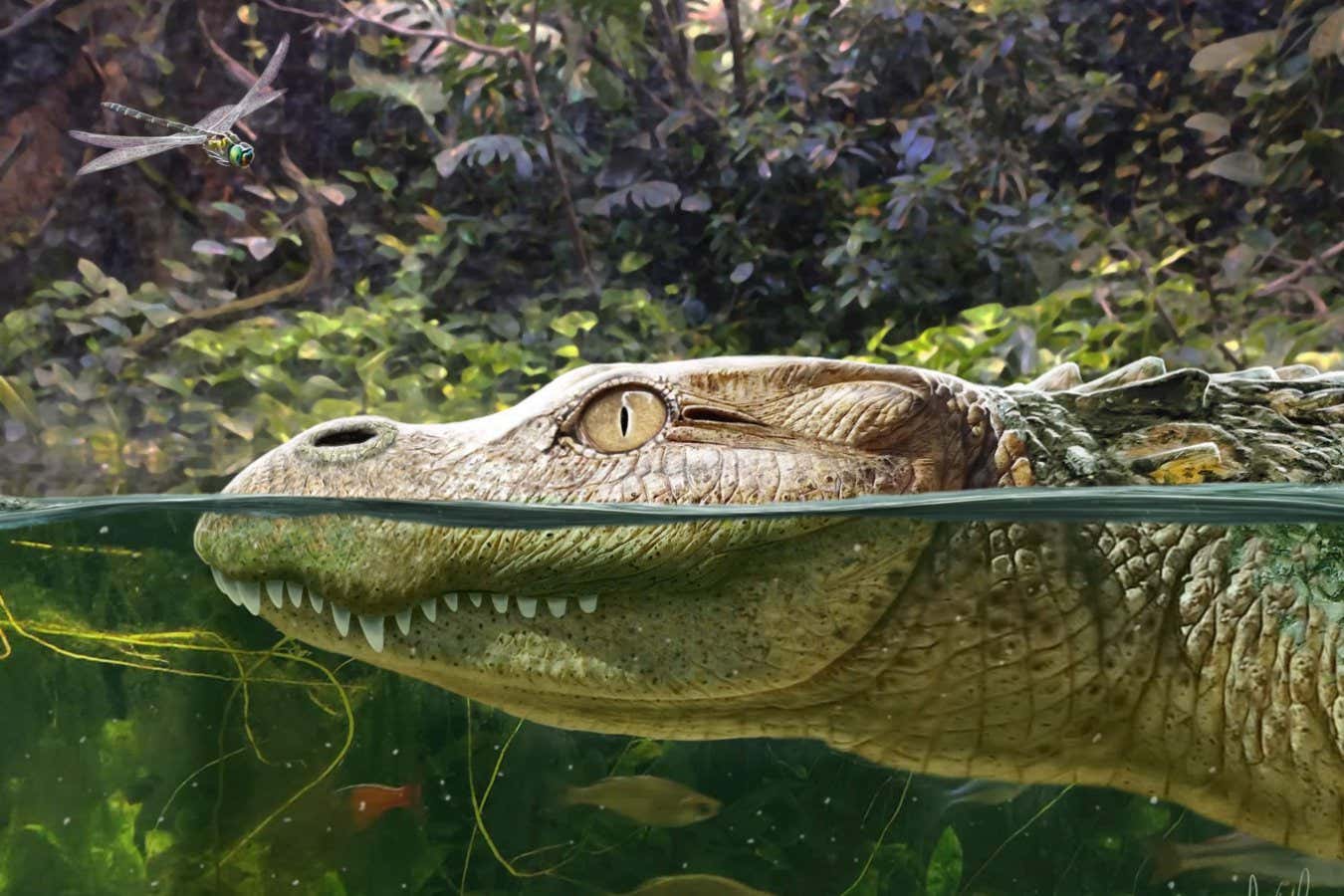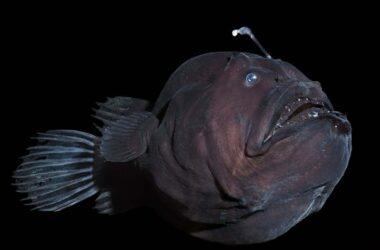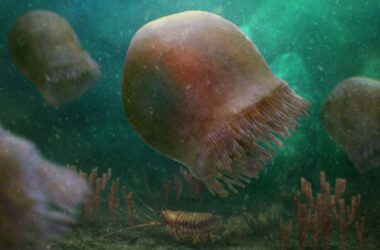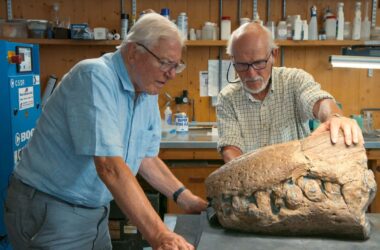Artist’s illustration of an ancient, short-snouted alligator
Márton Szabó
A reptile fossil discovered 18 years ago has finally been identified as an ancient alligator species that had an unusually short snout and may have hunted snails for food.
When the near-complete skull was uncovered in north-east Thailand in 2005, researchers were unsure about its identity. The distinct short and broad shape of the skull led them to believe it was likely an alligator species, but further investigation was necessary.
“The skull was really bizarre,” says Márton Rabi at the University of Tübingen in Germany. “It was screaming that it has to be a new species.”
Rabi and his colleagues recently took on the challenge of identifying the creature. By using computerised tomography scans, they compared the mystery skull with skulls of four extinct alligator species and seven living species, including American alligators (Alligator mississippiensis), Chinese alligators (Alligator sinensis), and spectacled caimans (Caiman crocodilus).
A few unique characteristics stood out: a short snout, a tall skull, and a broad head. The reptile also had fewer tooth sockets compared to other alligators of its size, and its nostrils were positioned further from the end of its snout. The large tooth sockets in the back of its mouth suggest that the alligator had strong teeth capable of crushing hard shells, indicating a diet that possibly included snails and other animals.
Based on these distinctive traits, the team concluded that this was a separate species, which they named Alligator munensis after the nearby Mun River. Fossils of similar species in the vicinity suggest that the short-snouted alligator could have existed as far back as 200,000 years ago, and possibly even as recently as a few thousand years ago. The reasons for its extinction remain unknown.
Because A. munensis shares traits with the Chinese alligator, such as a ridged skull and a small opening on the roof of its mouth, the researchers speculate that the two may have shared a common ancestor. It is possible that the rising Tibetan plateau separated their populations millions of years ago.
“This discovery is significant in improving our understanding of alligator evolution,” says Gustavo Darlim, also at the University of Tübingen and a member of the research team.








